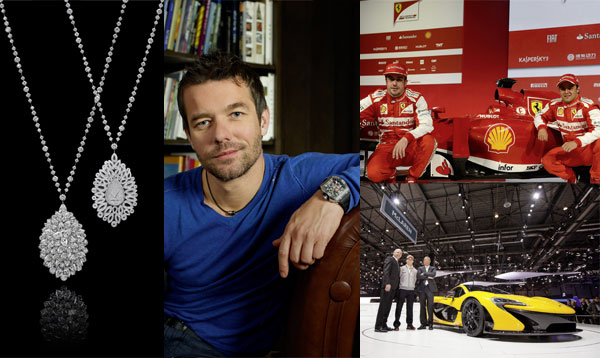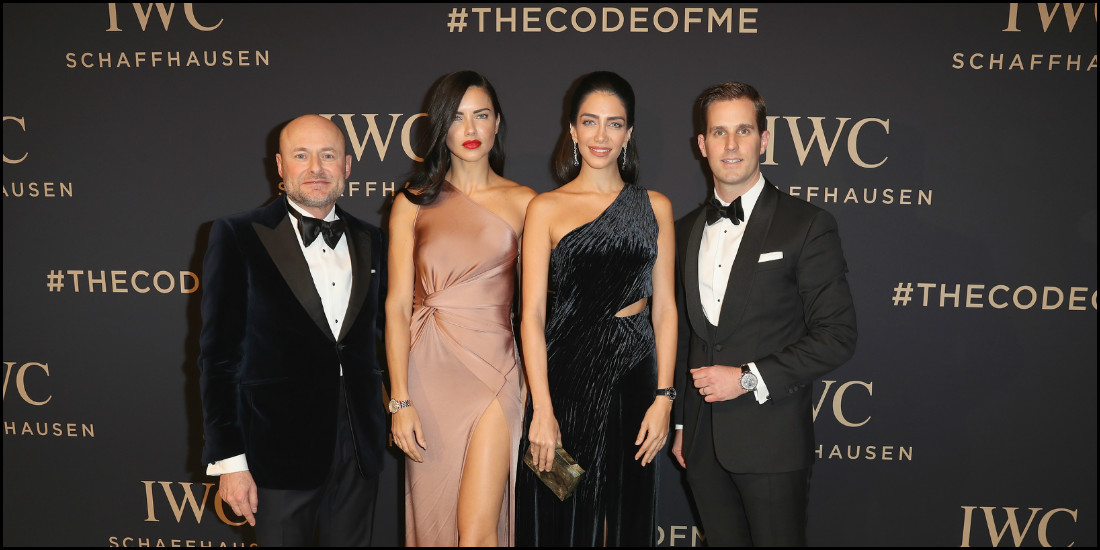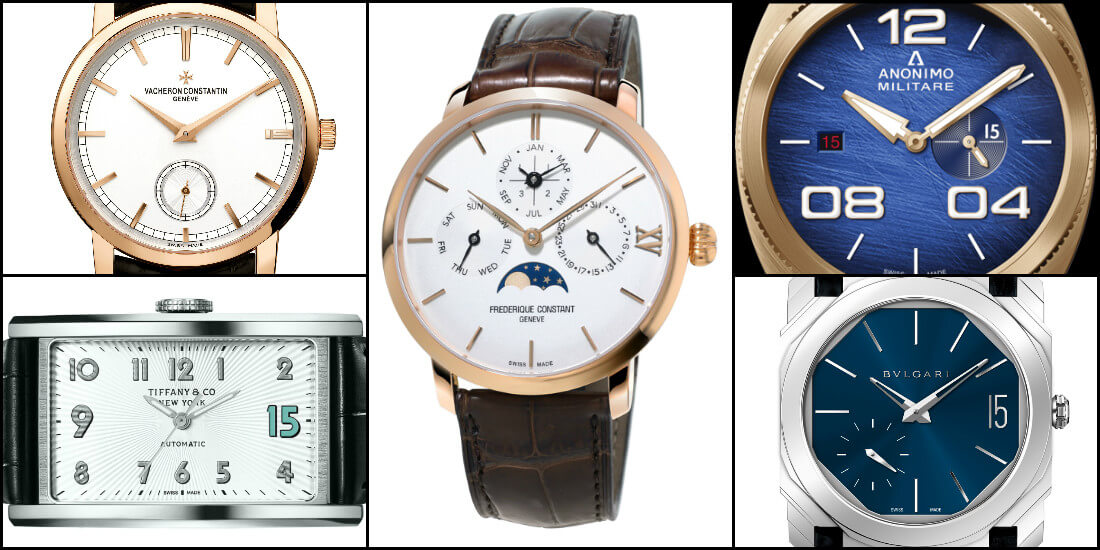
The Swatch Group snaps up Harry Winston’s diamond-studded creations.
At the 2013 Geneva Motor Show, Jean-Christophe Babin, President and CEO of TAG Heuer (in transit to Bvlgari) and Ron Dennis, Executive Chairman of the McLaren group, announced an exclusive new partnership involving the Formula 1 Vodafone McLaren Mercedes team and McLaren Automotive.
Already Official Timekeeper & Official watch of Ferrari and its Scuderia, Hublot is now more visible on the new F1 cars and on their drivers.
Femininity
With such top management changes, ladies’ watches should enjoy fresh momentum. That was indeed the watchword at the SIHH 2013. The Salon gave pride of place to the fair sex, welcoming an unprecedented number of high-quality new models for women. Representing both a growth driver and a demanding creative exercise, feminine horology is gaining renewed independence. In the high-end segment where it flirts with jewellery, creativity and poetry were already the name of the game. The main focus of the new releases was indeed on high-end watches, but more wearable ones. Above all, they are models designed with women in mind and not merely derived from men’s watches with a little touch of mascara.
Virility
Conversely, this winter’s masculine creations are eminently virile and high-octane. The major trend already emerging is that 2013 will be all about cars. Rolex got the ball rolling in January, when the world’s leading watch brand became partner and official timekeeper of the world’s leading motor-racing championship: Formula 1. The golden crown will thus consolidate its preeminent position thanks to the world’s most widely watched motorsport. A few weeks later, at the SIHH, IWC relaunched its Ingénieur model in an interpretation featuring titanium pistons, carbon bodywork and ceramic brakes – all stemming from a partnership with the Mercedes AMG Petronas Formula OneTM team. Again in the domain of ‘auto-horology’, Richard Mille has signed an agreement with the incredibly consistent rally champion Sébastien Loeb; and Hublot continues to work its partnership with Ferrari with a new complication watch. A few weeks before Baselworld, around 20 major brands had already announced their intention to take the wheel of racing cars, whether through new models or variations on existing historical pillars of their collections.
Chronographs
A word to the wise : behind one chronograph lurks another. In this instance, the patent filed by Adolphe Nicole in 1844 was apparently preceded by an 1815 invention ascribed to Louis Moinet and developed for the purpose of astronomical observation. On March 21st, the brand presented a recently discovered “compteur de tierces”. The maker’s marks identified on the caseback show that work on it began in 1815 and that it was completed in 1816. It displayed 60ths of a second, seconds and minutes as well as hours on a 24-hour dial. The start, stop and zero-reset functions are controlled via two pushpieces. Watchmakers are indeed full of surprises.






